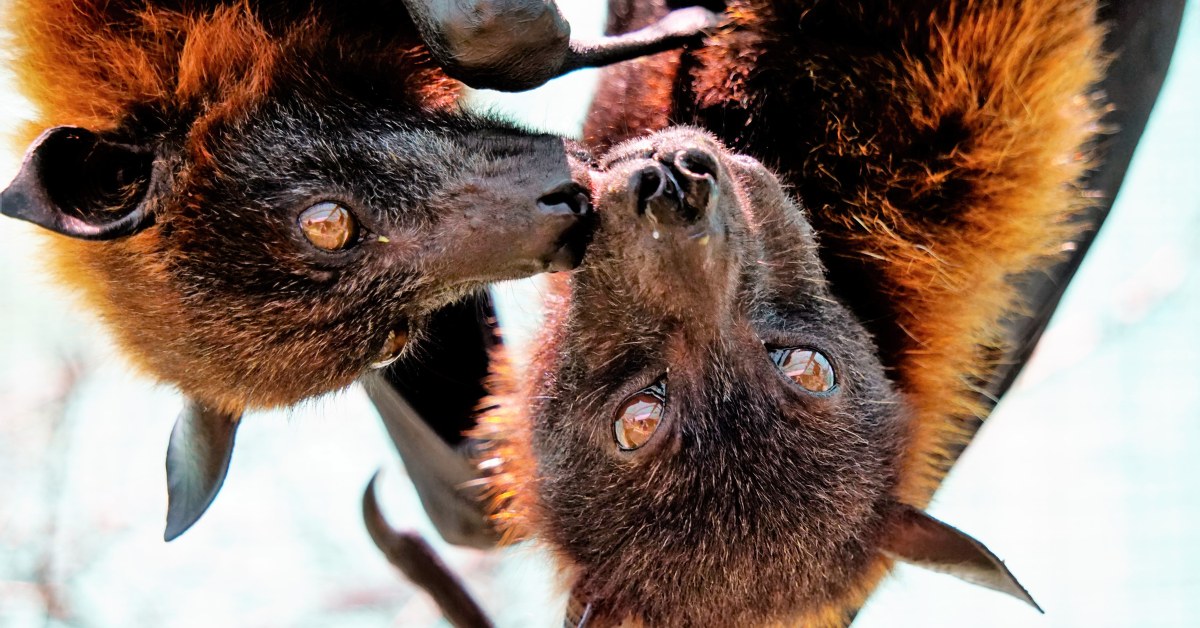Bats are front and center right now, and that’s a good thing because they are amazing animals. Today marks the kickoff of bat week, an international celebration dedicated to raising awareness of the roles they play in our ecosystems. And with Halloween around the corner, bat-themed decorations abound.
Unfortunately, bats are often feared, misunderstood and underappreciated.
Bats’ association with spooky season can be dated back to the late 19th century, with the publication of Bram Stoker’s Dracula—the cultural phenomenon that sparked the advent of a plethora of vampire tales (There have been more than 200 vampire movies made since). Dracula was described as a monstrous blood-sucking vampire that could transform himself into a bat. These stories stoked a fear of vampires, and by default, a fear of bats.
But bats’ association with vampires is not the only reason for this tradition of fear—many myths have developed about them—they are blind, drink blood, get caught in your hair and are rabid. Let’s set the record straight.
· Bats are NOT blind. They have quite good eyesight, which resembles that of a human. For most bats, echolocation—using sound to see— is the main technique used to catch prey. But some fruit-eating bats can even see colors to help them locate fruits and determine their ripeness.
· Most bats do NOT feed on blood. Of the more than 1,300 species and counting of bats, only three are vampire bats who rely on the blood of other animals to survive. They are native to Latin America and feed on cows and large mammals, who often don’t even notice when a bat comes for dinner.
· Less than one percent of bats have rabies.
Most importantly, bats are NOT pests—they’re integral parts of our ecosystems. They’re pollinators— the U.S. Forest Service says that bats are responsible for the pollination of 300 fruits plus agave.
Plus, they help control insect populations. Bats keep mosquito populations in check, protecting us from diseases. One insect-eating bat can consume 2,000-6,000 insects in a single night! A scientific paper on the economic value of bats to agriculture estimated that bats provided nontoxic pest-control services totaling $3.7 billion to $53 billion per year. This study did not even consider what the indirect costs of “replacing” bats with pesticides would be in terms of potential health and pollution threats from greater levels of toxins in the environment.
They’re what we refer to as an “indicator species,” meaning that their presence is used by researchers as a key indicator for the health of an entire ecosystem.
While bats are associated with diseases such as rabies and Ebola in more tropical climates, you can protect yourself by avoiding direct contact with bats (and their droppings) “bat-proofing” your home. (In the rare instance you are bitten by bat or come in direct contact with bats, contact a medical professional.)
Bats can fit through tiny openings, even as small as ¼ inch, and they often find shelter in homes. Check for any openings that bats could use to get inside. Caulk any openings larger than a dime. Use screens, chimney caps, and draft guards to seal attic doors. Fill electrical and plumbing holes with steel wool or caulk.
To fear bats is to fear the natural world. And we think that is the scariest thing of all. Instead, be nice to bats. They are facing threats like white-nose syndrome, wind turbines and habitat loss. They need our help.

